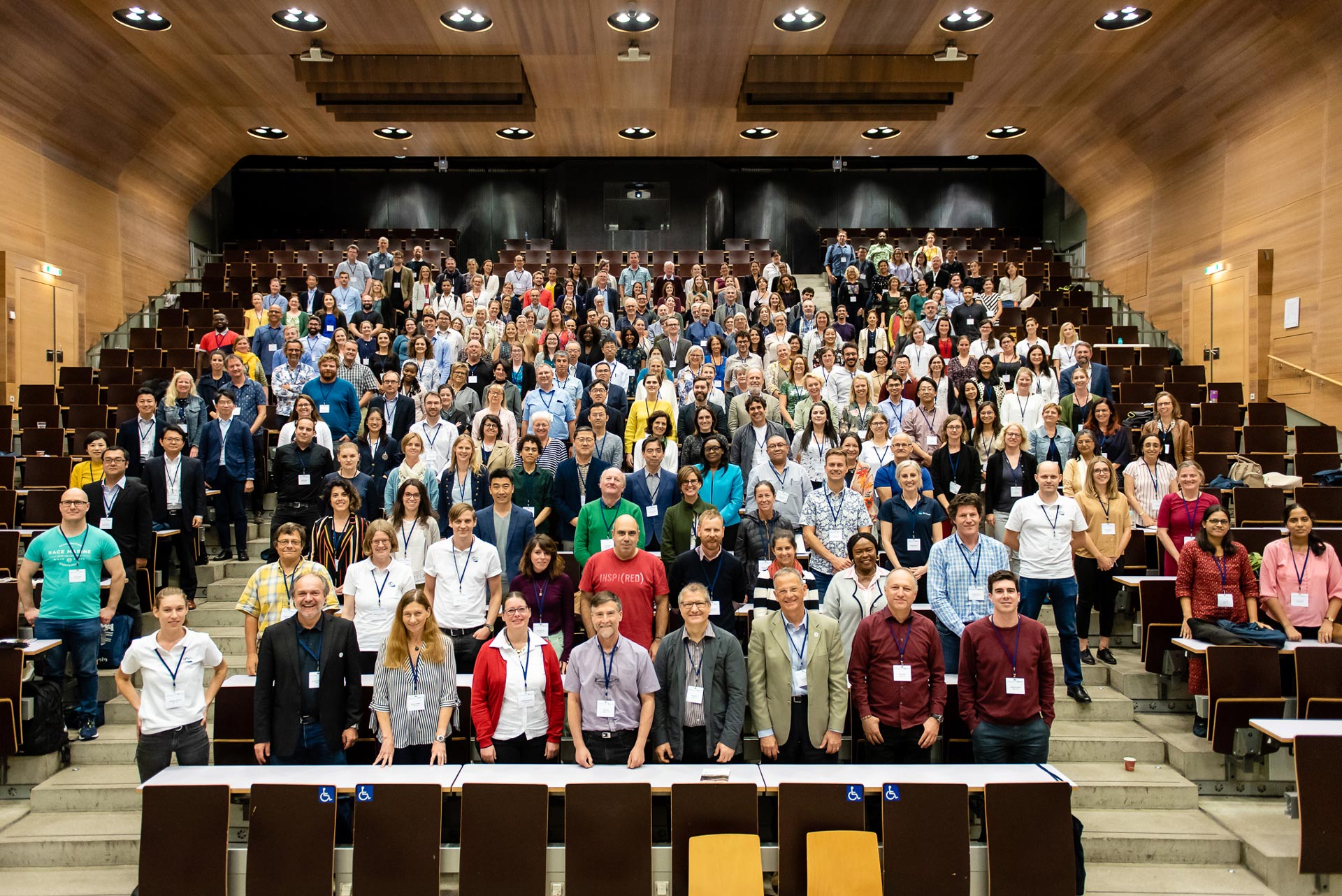Water Research, Volume 181, 15 August 2020, 115942.
Walter Randazzo, Pilar Truchado, Enric Cuevas-Ferrando, Pedro Simón, Ana Allende, Gloria Sánchez
https://www.sciencedirect.com/science/article/pii/S0043135420304796

International Water Association, Specialist Group
Water Research, Volume 181, 15 August 2020, 115942.
Walter Randazzo, Pilar Truchado, Enric Cuevas-Ferrando, Pedro Simón, Ana Allende, Gloria Sánchez
https://www.sciencedirect.com/science/article/pii/S0043135420304796
Water Research, Volume 181, 15 August 2020, 115926.
Kata Farkas, David I. Walker, Evelien M. Adriaenssens, James E. McDonald, Luke S. Hillary, Shelagh K. Malham, Davey L. Jonesae
https://www.sciencedirect.com/science/article/pii/S0043135420304632
Research Center for Water Environment Technology (RECWET), Graduate School of Engineering, the University of Tokyo is looking for a post-doc researcher who will be involved in either one of the following studies. While the post-doc takes part in one of the research divisions, he/she is supposed to actively interact with the other divisions as well as the other researchers in the university.
(1) Division on Water Quality Control Technologies and Materials Development
(2) Division on Water System Management
(3) Division on International Water Environment
You can find details of this post from HERE.
Water Research, Volume 180, 1 August 2020, 115880.
Brigid Hooban, Aoife Joyce, Kelly Fitzhenry, Carlos Chique, Dearbháile Morris
https://www.sciencedirect.com/science/article/pii/S0043135420304176
Water Research, Volume 179, 15 July 2020, 115878.
Yunus Ahmed, Ji Lu, Zhiguo Yuan, Philip L. Bond, Jianhua Guo
https://www.sciencedirect.com/science/article/pii/S0043135420304152
Water Research, Volume 179, 15 July 2020, 115879.
K. Domagała, C. Jacquin, M. Borlaf, B. Sinnet, T. Julian, D. Kata, T. Graule
https://www.sciencedirect.com/science/article/pii/S0043135420304164
Water Research, Volume 179, 15 July 2020, 115907.
Annalaura Carducci, Ileana Federigi, Dasheng Liu, Julian R. Thompson, Marco Verani
https://www.sciencedirect.com/science/article/pii/S0043135420304449
Water Research, Volume 179, 15 July 2020, 115899.
Giuseppina La Rosa, Lucia Bonadonna. Luca Lucentini, Sebastien Kenmoe, Elisabetta Suffredini
https://www.sciencedirect.com/science/article/pii/S004313542030436X
Water Research, Volume 178, 1 July 2020, 115671.
Meredith B. Nevers, Muruleedhara N. Byappanahalli, Cindy H. Nakatsu, Julie L. Kinzelman, Mantha S. Phanikumar, Dawn A. Shively, Ashley M. Spoljaric
https://www.sciencedirect.com/science/article/pii/S0043135420302074
Water Research, Volume 178, 1 July 2020, 115835.
Xiaoyue Zhang, Xiaosha Zhi, Lei Chen, Zhenyao Shen
https://www.sciencedirect.com/science/article/pii/S0043135420303729
Water Research, Volume 178, 1 July 2020, 115814.
Joel P. Stokdyk, Aaron D. Firnstahl, James F. Walsh, Susan K. Spencer, Jane R. de Lambert, Anita C. Anderson, Lih-In W. Rezania, Burney A. Kiek Jr., Mark A. Borchardt
https://www.sciencedirect.com/science/article/pii/S0043135420303511
Aquatic yeasts: diversity, characteristics and potential health implications
Mzimkhulu Ephraim Monapathi; Carlos Cornelius Bezuidenhout; Owen Howard James Rhode
J Water Health (2020) 18 (2): 91–105.
Preparation and characterization of PAN nanofibers containing boehmite nanoparticles for the removal of microbial contaminants and cadmium ions from water
Sedigheh Borhani; Arezo Asadi; Hossein A. Dabbagh
J Water Health (2020) 18 (2): 106–117.
Detection of Acanthamoeba spp. in two major water reservoirs in the Philippines
Giovanni Milanez; Frederick Masangkay; Frieda Hapan; Thea Bencito; Marcus Lopez; Jeffrey Soriano; Abdee Ascaño; Louella Lizarondo; Joseph Santiago; Voravuth Somsak Manas Kotepui; Amalia Tsiami; Jitbanjong Tangpong; Panagiotis Karanis
J Water Health (2020) 18 (2): 118–126.
The occurrence of potentially pathogenic filamentous fungi in recreational surface water as a public health risk
Katarzyna Góralska; Joanna Błaszkowska; Magdalena Dzikowiec
J Water Health (2020) 18 (2): 127–144.
OPEN ACCESS!!!
Water, sanitation and hygiene risk factors for the transmission of cholera in a changing climate: using a systematic review to develop a causal process diagram
Natalia Jones; Maha Bouzid; Roger Few; Paul Hunter; Iain Lake
J Water Health (2020) 18 (2): 145–158.
Monitoring the lead-and-copper rule with a water-gated field effect transistor
Zahrah Alqahtani; Nawal Alghamdi; Martin Grell
J Water Health (2020) 18 (2): 159–171.
Acanthamoeba spp. in river water samples from the Black Sea region, Turkey
İlknur Koyun; Zeynep Kolören; Ülkü Karaman; Amalia Tsiami; Panagiotis Karanis
J Water Health (2020) 18 (2): 186–199.
The pursuit of good microbiological conditions in domestic softeners: a new improvement
L. Bolelli; Elida Nora Ferri; Stefano Sangiorgi; Giuseppe Novelli; Stefano Girotti
J Water Health (2020) 18 (2): 200–206.
OPEN ACCESS!!!
Developing a forecasting model for cholera incidence in Dhaka megacity through time series climate data
Salima Sultana Daisy; A. K. M. Saiful Islam; Ali Shafqat Akanda; Abu Syed Golam Faruque; Nuhu Amin; Peter Kjær Mackie Jensen
J Water Health (2020) 18 (2): 207–223.
Effect of Spathiphyllum blandum on the removal of ibuprofen and conventional pollutants from polluted river water, in fully saturated constructed wetlands at mesocosm level
Luis Sandoval; José Luis Marín-Muñíz; Jacel Adame-García; Gregorio Fernández-Lambert; Florentina Zurita
J Water Health (2020) 18 (2): 224–228.
Identifying the primary sources of fecal contamination along the beaches and rivers of Trinidad
Ronell S. H. Bridgemohan; Dave S. Bachoon; Yingfan Wang; Puran Bridgemohan; Christine Mutiti; Adesh Ramsubhag
J Water Health (2020) 18 (2): 229–238.
Febrile illness after a beach day: a case of salmonella bacteremia from oral exposure to a sand dollar
Carlos E. Trigo; Faisalmohemed Patel
J Water Health (2020) 18 (2): 239–243.
Isolation and identification of Acanthamoeba genotypes and Naegleria spp. from the water samples of public swimming pools in Qazvin, Iran
Nastaran Paknejad; Elham Hajialilo; Mehrzad Saraei; Amir Javadi
J Water Health (2020) 18 (2): 244–251.
Water Research, Volume 177, 15 June 2020, 115788.
Tingting Xu, Giovanni Coco, Martin Neale
https://www.sciencedirect.com/science/article/pii/S0043135420303250
Water Research, Volume 177, 15 June 2020, 115812.
Christina M. Morrison, Walter Q. Betancourt, Daniel R. Quintanar, Gerardo U. Lopez, Ian L. Pepper, Charles P. Gerba
https://www.sciencedirect.com/science/article/pii/S0043135420303493
Water Research, Volume 177, 15 June 2020, 115628.
Katarina Bačnik, Denis Kutnjak, Anja Pecman, Nataša Mehle, Magda Tušek Žnidarič, Ion Gutiérrez Aguirre, Maja Ravnikar
https://www.sciencedirect.com/science/article/pii/S0043135420301640
Recent Comments